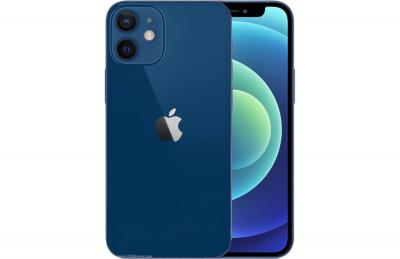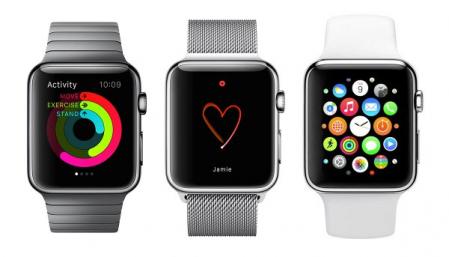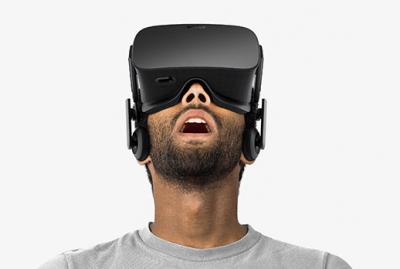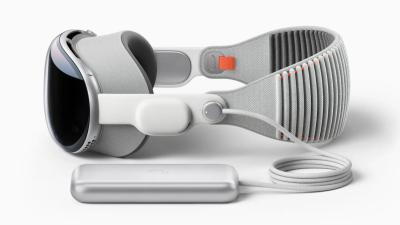Apple: OLED company spotlight
OLED is a new display technology, used to create thin, power efficient and bright displays. Today OLEDs are used in mobile phones, tablets, digital cameras and even TV sets - as OLEDs are considered the best display technology ever.
Apple's OLED devices
Apple's 10th anniversary iPhone X was the company's first OLED Phone - with a 5.8" 1125x2436 (458 PPI) flexible Super AMOLED display. Since then Apple has been adding more OLED iPhones, and starting in 2021, the company's entire smartphone lineup adopts AMOLED displays.

In April 2015 Apple launched its first wearable device, the Apple Watch which used a flexible AMOLED display (made by LG Display). All Apple Watch products to date continue to use flexible AMOLED displays. OLED displays are especially suitable for wearable devices - as the displays are thinner and lighter than LCD displays, and are more power efficient (especially if you tweak the UI to suit the special OLED properties).

In 2024 Apple launched its first OLED tablets, the 2024 iPad Pro devices, There are two devices, a 11" model (1668x2420) and a 13" model (2064x2752). Both OLEDs offer 120Hz and 1600 nits peak brightness - and a tandem architecture. Apple brands these displays as Ultra Retina Tandem OLEDs.
Apple also has other OLED devices. The Vision Pro VR headset uses 1.4" 4K OLED microdisplays (produced by Sony). In 2016, the company released its MacBook Pro range of high-end laptops that had an OLED Touch Bar instead of the traditional function keys. The company's latest laptops, though, no longer uses this OLED panel.
DSCC expects Apple's first month iPhone 16 panel shipments to be 8% higher than those of the iPhone 15
DSCC says that shipments of Apple's iPhone 16 series were 8% higher in the first month compared to the shipments of Apple''s iPhone 15 series last year. As Apple continues to target emerging markets, DSCC expects Apple to increase sales of entry level and older iPhones, including the iPhone 13, 14, and 15 series.
Interestingly, a couple of weeks ago we reported that according to Apple analyst Ming-Chi Kuo the first-week demand for Apple's new iPhones is lower than expected, with total demand of only 37 million units - lower by 13% compared to the demand for the iPhone 15 a year ago. It remains to be seen whether demand picked up later in September.
Ming-Chi Kuo says first week demand for Apple's iPhone 16 series is lower by 13% compared to the iPhone 15
A few days ago Apple announced its 2024 iPhone 16 series, with all four models (iPhone 16, 16 Plus, 16 Pro and 16 Pro max) based on OLED displays. According to Apple analyst Ming-Chi Kuo the first-week demand for Apple's new iPhones is lower than expected, with total demand of only 37 million units - lower by 13% compared to the demand for the iPhone 15 a year ago.
According to Ming-Chi Kuo, who's considered very reliable, the demand for the lower-end models is actually higher than last year - by 10% for the iPhone 16 and 48% for the 16 Plus. But this is not enough to offset the drop in demand for the higher-end modes: 27% less demand for the iPhone 16 Pro and 16% for the 16 Pro Max.
Apple looks to adopt a TFT AMOLED for its future entry-level MR headset
There's an interesting report in Korea that claims that Apple is developing an entry-level MR headset, and is looking to adopt TFT based AMOLED displays, as opposed to the currently-used OLED microdisplays. It is reported that both JDI and Samsung are in talks with Apple, and have been requested to develop lower-cost TFT AMOLEDs with a pixel density of 1,500 PPI (down from 3,400 PPI high-end Sony microdisplays used in the Vision Pro).
It is understood that JDI has already developed the technology and produced 1,500 PPI samples for Apple. Interestingly it is reported that the JDI displays uses Sony's technology, although it is not stated which technology exactly. Samsung meanwhile is also developing 1,500 PPI AMOLEDs at its A2 fab. Apple's target is to release the headset at around 2026-2027 and by then it is likely that more OLED producers (such as LG Display) will develop similar displays.
Apple announces its 2024 iPhone 16 series, and the new Apple Watch Series 10, all with AMOLED displays
Yesterday Apple announced its 2024 iPhone 16 series, and its latest smartwatch devices - all based on OLED displays. We'll start with the the iPhone 16 that offers a 6.1" 2,000 nits (HBM) 1179x2556 Super Retina XDR LTPS AMOLED, while the iPhone 16 Plus offers a larger 6.7" 1290x2796 display. Both phones are based on Apple's latest 3nm A18 chipset offering improved performance and AI support.
The iPhone 16 Pro has a more advanced 6.3" 120Hz 2,000 nits (HBM) 1206x2622 LTPO Super Retina XDR OLED. The 16 Pro Max offers a larger 6.9" 1320x2868 AMOLED. These new phones are based on Apple's 3 nm A18 Pro chip, offer a "huge leap in battery life", support Apple Intelligence and feature new a main camera.
Reports say Apple to adopt an OLED display 2025 iPhone SE 4, start to order panels from LG Display and BOE
According to reports from Japan, Apple decided to adopt a 6.1" AMOLED display for its upcoming iPhone SE 4 smartphone, which will mean that all of the company's smartphone products will be based on OLED displays.
We actually reported this in March 2024, and back then it was suggested that Apple's target price was $25 for the OLED display - which was too low for Samsung Display that decided not to continue with its discussions with Apple. Back then it was estimate that BOE will supply the majority of the displays, and some orders will go to Tianma. According to the new report, the second supplier is actually LG Display.
UBI Research: OLED tablet shipments to jump over 500% in 2024 to reach 12 million units
UBI Research estimates that 12 million OLED tablet panels will ship in 2024, and increase of over 500% from 2023 (1.84 million units), following Apple's adoption of OLEDs in its iPad Pro devices for the first time.
UBI sees the tablet OLED display market continuing to grow, and is expected to reach 30 million units in 2028. The current market leaders are Samsung Display and LG Display, but other display makers are also targeting this market, with BOE aiming to ship 1.5 million OLED tablet panels in 2024, and Visionox around 800,000 units.
Meta reportedly cancels its plans to release a high-end VR headset
According to reports, Meta has decided to cancel one of its VR projects that was planned for 2027. This device was to be a high-end product, similar to Apple's Vision Pro - with a similar high price tag. Following the poor market reaction for Apple's Vision Pro, Meta decided to scrap the project.

The original Oculus Rift
Meta was planning to use OLED microdisplays in its upcoming high-end headset, as these are the best performing displays for such products. It is reported that one of the reasons that Meta is not proceeding with its project is the high price of the OLEDs. These are expensive displays indeed - according to some estimates, Apple is paying $350 for each display, which means around $700 for each headset. On the other hand, it is estimated that OLED microdisplay prices are set to drop sharply in the near future as new capacity comes online, and new players (including Samsung and LGD) start producing displays.
DSCC: 4.1 million OLED tablet panels shipped in Q2 2024, a new record high
According to DSCC, 4.1 million OLED tablet panels shipped in the second quarter of 2024, a new record high, as Apple launched its 2024 OLED iPad Pro tablets. Apple quickly became the largest buyer of OLED tab let panels - with a 72% market share in Q2 2024 (followed by Huawei at 13% and Samsung at 9%).
DSCC expects the OLED tablet panel market to fall 5% in the next quarter to 3.9 million panels (but up 169% over Q3 2023), as Apple reduces its orders dramatically after the launch, but this will be almost offset by new panels shipments to Microsoft and Honor. Growth will continue in Q4, and total panel shipments are expected to each over 14 million units in 2024, over 200% growth from 2023.
Reports suggest Apple plans to release an OLED iPad Air device in 2026
Korea's The Elec reports that Apple is planning to release an OLED iPad Air device in 2016. The leading display producer will be Samsung Display.
According to the report, the iPad Air AMOLED will be a single-stack LTPS AMOLED device, unlike the tandem OLEDs used in the 2024 iPad Pro devices. The report also suggests that the same AMOLED displays may also be used in the 2026 iPad Mini devices - as Apple aims to adopt OLEDs in all of its iPad devices in the future. But Apple hasn't fully decided on its iPad Mini OLED adoption roadmap yet.
Apple reportedly cuts its tandem AMOLED panel orders, and increases LGD's share over Samsung
According to reports, Apple has cut its total 2024 OLED iPad Pro panel orders from Samsung and LG to around 7-8 million units, down from its planned 9-10 million units, as the demand for Apple's new iPads is not as high as expected.
Pagination
- Page 1
- Next page










